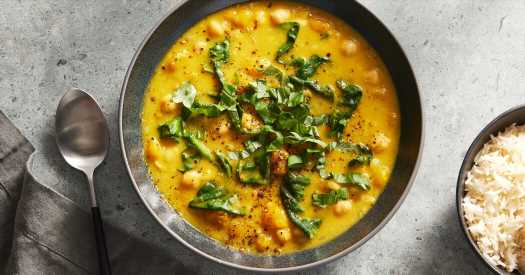Squash and chickpea stew, all kinds of baked potatoes and more recipes.
Send any friend a story
As a subscriber, you have 10 gift articles to give each month. Anyone can read what you share.
By Melissa Clark
“The Clark Hilton” was my grandmother’s wry name for the rambling house in Ditmas Park, Brooklyn, where I grew up. We had a constant stream of guests because my parents issued standing invitations to family, friends and their families, and friends of friends to stay for a meal, a night or even a month.
And if our hotel had a lobby, it was the kitchen. There, I might find my cousins from Wisconsin sipping sauvignon and kneading anadama bread with my dad, or Jean-Claud from Paris punning in Franglish and snipping chives into a coq au vin. Kitchen work breeds kinship, and the Clark Hilton lodged and fed what is now my extended family.
If you don’t always know who’s coming to dinner, it’s best to make dishes that are elastic. Aim for enough leftovers to feed, say, the carload of your sister’s college roommates that just pulled into the driveway. A perfect example is Kay Chun’s squash and chickpea stew with lemongrass (above), reminiscent of a Thai curry and spiked with peanut butter. You could serve it with Ali Slagle’s avocado and onion salad with its plush texture and sharp allium bite, or Zainab Shah’s bhindi masala, okra with red onions and tomatoes.
And you can never go wrong with a big platter of baked potatoes, dressed up in all kinds of ways: classic with butter and maybe some scallions; twice-baked and crowd-pleasing, vegan or regular; stuffed with crab, jalapeño and mint; and turned into baked potato soup. Want to be the host with the roast? Serve the spuds with a lemony roast chicken or a brawny meatloaf, and throw in a celery and fennel salad topped with Parmesan for crunch.
Because nothing says welcome like a great dessert — whether you have guests or not; self-care is just hospitality for one — try Yossy Arefi’s brown-butter poundcake, which is richer than the usual recipe, with a crackly lemon icing on top.
You’ll need a subscription to access the recipes. If you don’t already have one, subscribing to New York Times Cooking is an absolute cinch. (And if you are already subscribed, we thank you.) We are also on YouTube, TikTok and Instagram, where you can watch Nargisse Benkabbou make her golden-hued skillet chicken with turmeric and orange, a bright and zesty flavor combination that’s traditional in Morocco. If you’re in need of any technical help, the smart folks at [email protected] will be there for you. And I’m at [email protected], as always, if you want to say hi.
If you’ve never worked in food service, know that running a restaurant is very different from inviting people to gather in your home. And yet the lines start to blur at Sarapes Mexican Restaurant, featured in Melissa Guerrero’s recent story in The Times with exuberant photographs by Adrian Martinez Chavez. Locals congregate at this spiritual hub for karaoke, commiseration and comfort. As a member of the restaurant family’s third generation puts it, “Food brings people together. I think that’s the source of life.”
There may be a pandemic-related volatility between restaurants and their guests right now, writes Ligaya Mishan in T: The New York Times Style Magazine. But she makes the case that the dining room, whether public or private, can be a schoolroom for empathy.
“Is this not the arc of a life,” Ligaya writes, “to slowly become aware of the people around us and the labor required to make our survival and happiness possible — the spills quietly mopped up, the food materializing as if out of thin air on the table — and to learn, if we can, to do the same for others?”
Sam’s back on Friday, and I’ll see you on Monday.
Site Index
Site Information Navigation
Source: Read Full Article


